Important information for custodians of religious buildings: the preservation & restoration of stained glass in churches and synagogues
Introduction: stained glass in medieval cathedrals
Beginning in early medieval times, glorious stained glass windows have inspired congregations in the great Gothic cathedrals of Europe. Windows like those in the astonishing nave of Sainte Chapelle in Paris and the classic C13th panels at Chartres served not only as a poor man’s bible, allowing believers who could not read Latin to learn the story of the Gospels but also as man’s message to the creator in praise of the Lord – a sublime symphony of color worthy of God’s world – illuminating their cathedrals with multicolored light as if projected from heaven itself.
Glass and vandalism: symptom of urban decay – and worse
Unfortunately, the same properties that give glass it’s qualities of beautiful translucency also mean that it is brittle and very easily broken. This has made glass a prime target for vandals – with stained glass being especially vulnerable because places of worship are generally not occupied at night and, regrettably may fall victim to ideological prejudice, racial hatred or antisemitism.
(As an aside, students of criminology and history may wish to ponder that broken windows are metaphors in criminology for of urban decay and in a more sinister context, symbols of unspeakable events like Krystallnacht in 1938.)
Artistry in Glass: we specialize in stained glass restoration
We have been restoring damaged stained glass since 1986. Study this website to understand the various types of art glass present in your buildings, the range of replacement costs, recommendations for maintenance & what to do in the unfortunate event of vandalism, fire or other disasters.
Types of Stained Glass in US Churches
- Leaded Stained Glass
- Painted/Fired Stained Glass
- Copper Foil-Style Stained Glass
- Faceted Glass (Dalles de Verre)
- Sandblasted/Etched Glass
- Glass or Ceramic Mosaics
Leaded Stained Glass
is the most common art glass in religious buildings with pieces of colored glass fabricated in “H”- shaped lead or zinc channel (called came) in a large variety of styles ranging from traditional figurative windows to modern abstract designs.
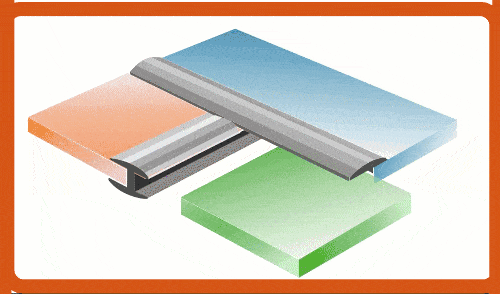
Painted/Fired Stained Glass
the origin of the term “Stained Glass” because it is made by painting (staining) translucent (cathedral) glass – it is used to render details (primarily faces, hands and feet) which cannot be represented with coarse lead lines). Examples range from irreplaceable masterpieces like windows by Tiffany or La Farge to typical neo-gothic designs common in older Tucson churches.
Copper Foil-Style Stained Glass
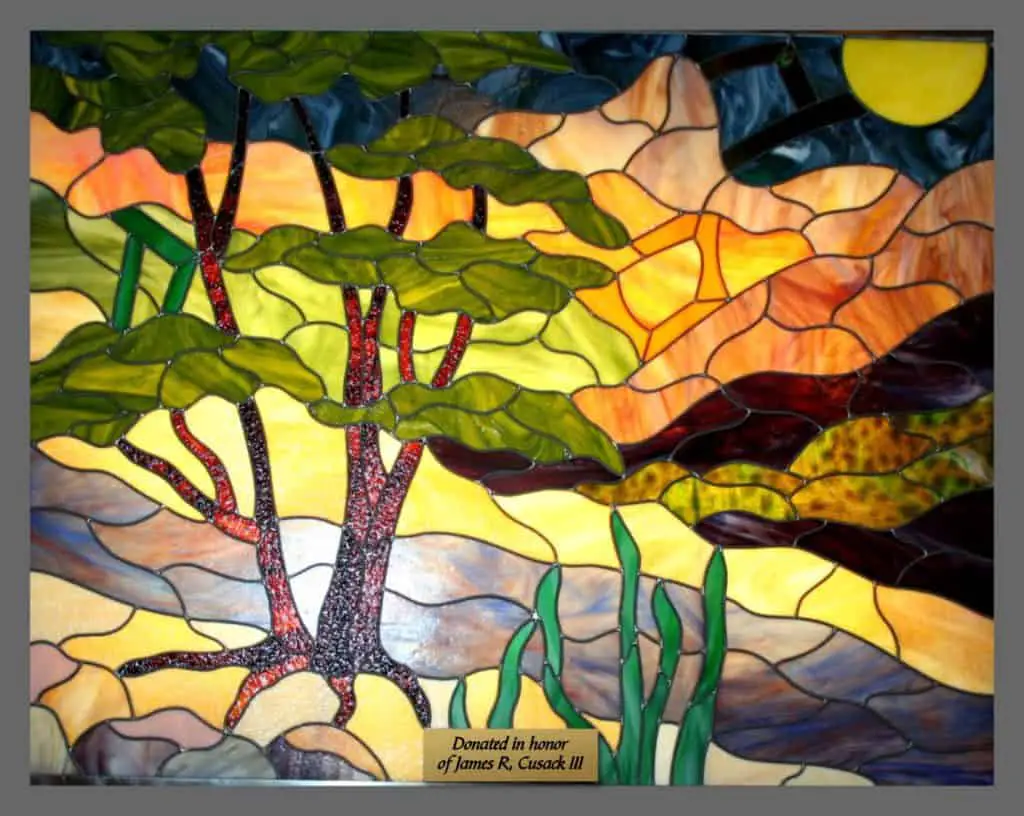
(sometimes called Tiffany-style, because it was invented by Louis Comfort Tiffany) is most commonly associated with highly collectible, stained-glass lampshades. In religious settings, copper-foiled glass is generally used for smaller, interior panels where the finer solder lines allow more design detail to be rendered and for virtuoso use of overlay solder techniques.
Faceted (Dalles de Verre)
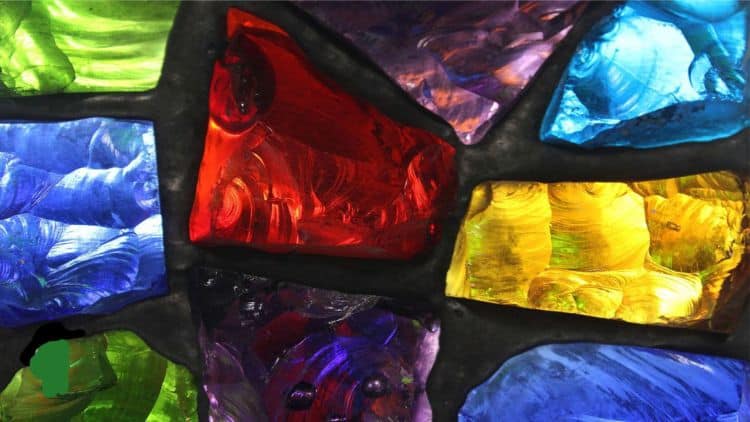
windows have become popular since the 1950s, and are made with 1” thick slabs (dalles) of colored glass cemented by epoxy – creating a mosaic-like appearance – particularly appropriate for non-figurative or abstract designs. The bold, vibrant appearance is appropriate for modern places of worship as well as being more resistant to vandalism than traditional leaded glass.
Sandblasted/Etched Glass
The versatility of glass and the creativity of glass artists mean that many other varieties of glass art are incorporated into religious buildings. These types need to be identified and evaluated for conservation purposes. including, for example, sandblasted or etched glass which is commonly used to render verbiage (names, dates, and dedications).
Glass or Ceramic Mosaics
Several religious buildings in Tucson have made use of colored glass and ceramic fragments (called tesserae) to create indoor or outdoor mosaic panels. Unlike stained glass, mosaics are opaque and designed to be viewed in reflected light. Because they are commonly placed on exterior walls (subjected to wide temperature variations) the epoxy or plaster matrix very often requires restoration.
Examples of vandalism: #1 leaded stained glass
Unfortunately, even a simple stained glass panel is difficult and therefore expensive to repair partly because the construction method, with colored glass fitted into H-shaped came, means that most windows cannot be repaired on-site – they have to be removed to be fixed. Typical restoration costs are in the $100 – $200 per square foot range + the costs to board up the opening and re-install – and a further problem is that it may not be possible to match antique glass exactly.
Examples of vandalism: #2 painted/fired stained glass
The cost for restoration increases dramatically with elaborately painted stained glass such as traditional gothic-revival windows in early 20th-century churches. As before, the damaged panel has to be removed, the opening has to be boarded up, and each broken lite has to be recreated by a specialized glass artist laboriously painting the new glass in numerous stages – each stage being fired at about 1100 degrees in a kiln – before the panel is finally re-assembled. Prices for painted/fired stained glass repair range from $400 to $700 per square foot or more. So typical large windows may cost tens of thousands of dollars to replace.
Examples of vandalism: #3 faceted (dalles de verre) glass
As faceted glass is constructed from 1” thick slabs of glass in a matrix of epoxy one would think that these Dalles de Verre panels would be strong enough to resist attacks by vandals. However, this is surprisingly not so – in the Tucson Metro area alone we have been called upon to repair faceted glass at four churches in recent years. Because these windows are generally bonded to the masonry – repairs need to be done on-site. Dalles are carefully fabricated (cut to size and faceted) in our studio and then cemented into place to fill the spaces left by the broken glass. Our experience has shown that faceted glass windows are not vandal-proof so custodians should consult security professionals for advice on securing the exterior of their buildings.
Examples of vandalism: #4 Religious Statuary
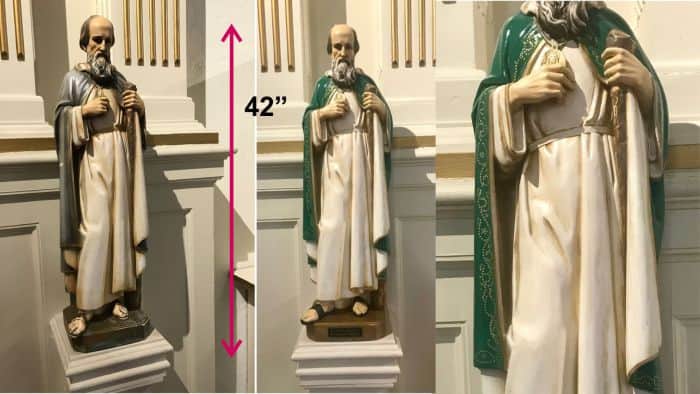
In an interesting incident at a local Catholic church, damage to a large (48″ tall) statue of St Jude was caused by a kind of involuntary vandalism when an elderly parishioner, took the saint home, hoping that he would intercede on her behalf to cure a sick family member. Once the culprit was identified a compassionate church official promised to take no legal action providing the statue was returned immediately. We were invited to repair the damage (and also correct the faded colors of the vestments adding a golden decorative fringe.
Recommended precautions to survive vandalism – 4 point action plan
The cases of window and property damage shown in our video are just a few examples of the highly regrettable but widespread sociological phenomenon of church vandalism – and the high and increasing repair costs clearly demonstrate the importance of having a strategy for conservation and restoration of stained glass in your place of worship. Vandalism is almost inevitable but you can take precautions by following our simple, four-point, action plan.
1) Archival Documentation
Nearly all religious stained glass represents the fruition of a process of prayer and consultation within the congregation during the formative years of the church or synagogue. Windows thus represent a crucial inspirational and historical record. Furthermore, by some estimates, 50% of religious stained glass windows in US churches are donor-recognition panels – priceless memorials for loved ones – often commissioned many decades ago. With this historical and sentimental importance in mind, and particularly in view of the very high replacement costs outlined above, it is vital to have written and photographic documentation of your stained glass windows. In the event of fire or vandalism, it is only through archival documentation that these art glass treasures can be restored or re-created.
2) Replacement Cost Appraisal
Whether archival documentation is justified or not, it is essential to appraise your stained glass to determine the replacement cost for insurance purposes. The cost of stained glass and especially painted glass has risen faster than inflation in recent years so an accurate and up to date appraisal is essential to give insurance companies the information they need to process your claim.
3) Condition Report
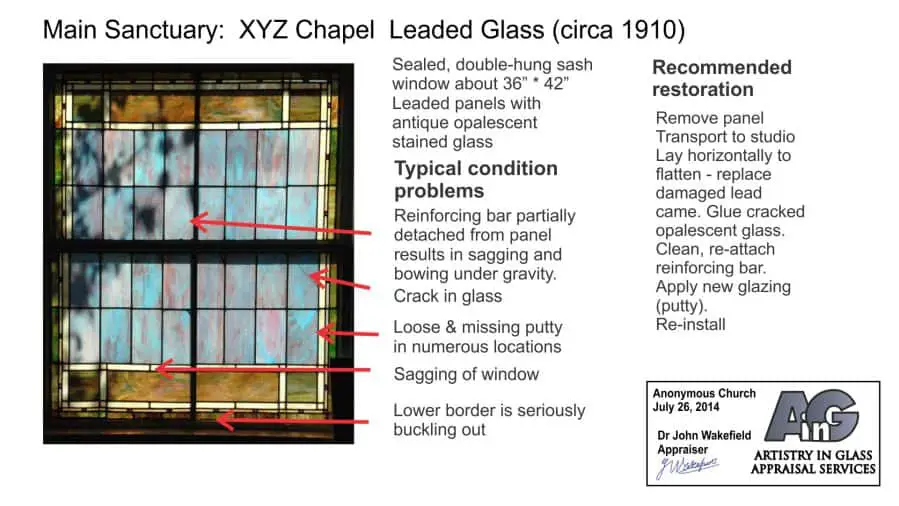
The condition of the stained glass, glass paint, lead came and structural support system should be evaluated by an expert and furnished to the client in a report like the one pictured above. Stained glass deteriorates with time and virtually all panels over 75 years old need preventative maintenance. In Arizona particularly, west- or south-facing windows have been subjected to very large diurnal temperature variations and the repeated expansion and contraction of metal came results in loosening of support bars and the drying up and failing of the glazing putty causing windows to buckle and sag. If sagging is left uncorrected the entire panel will fall to pieces.
4) Restoration & Protection
As a follow-up to the condition report church & synagogue custodians should request estimates of the cost to restore defective or broken stained glass, an analysis of the effectiveness of protective glazing and recommendations for its modification or replacement.
How to Protect Stained Glass
Exterior Protection
Exterior protective glazing systems must be designed and installed by experts – un-ventilated glazing, for example, can do more harm than good so call Artistry in Glass if you need detailed advice. This is a complicated subject but, in brief, tempered glass is impact-resistant but will eventually shatter, whereas high-grade lexan is almost indestructible, but is very expensive and may yellow with UV exposure. Therefore many experts currently favor laminated-safety glass which although it breaks quite easily, maintains its integrity and protection by virtue of the vinyl interlayer which is sandwiched between two sheets of regular glass.
Interior Protection
Of course, protecting windows from the outside will not prevent vandals from damaging the inside – a situation that has occurred at numerous placed of worship. Culprits range from disgruntled or mentally disturbed parishioners to thrill-seeking young vandals, ideologically motivated hate criminals and others. Whatever the reasons it’s clear that the traditional respect for the sanctity of religious buildings can no longer be taken for granted in the 21st century and serious attention must be paid to safety and security programs in places of worship.
What to do in the event of vandalism
In the unfortunate event of vandalism here is what we recommend:-
1) Email digital images showing close-ups & general views of the damage to John Wakefield: [email protected].
2) Carefully preserve broken stained glass and debris: this may be useful for restoration/color matching.
3) If appropriate, Artistry in Glass will schedule a site visit and prepare restoration estimates for insurance purposes.
